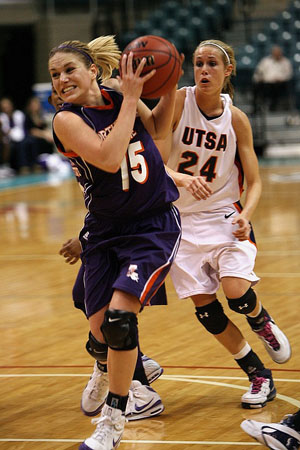Nov 9, 2017Weighing the Consequences

Injuries come with the territory for many college athletes. However, for a great deal of them, the pain associated with these misfortunes doesn’t always end after an operation, and it doesn’t go away on its own. Instead, there is a good chance they will face chronic injury problems later in life.
This leaves some medical experts wondering whether the benefits of college athletics outweigh the possible restrictions to future physical activity. In an article for Sports Illustrated, Ian McMahan, MA, ATC, PES, sports medicine professional and former athletic trainer for the Women’s World Cup, MLS, and the University of Maryland, discusses the long-term impact that participating in college sports has on athletes.
For some players, there are few, if any, lingering negative effects. For instance, Gray Garrett played volleyball for UCLA and faced some common injuries, including a bad shoulder and sprained ankle, but is now able to engage in physical activity multiple times a week without any major issues.
“A lot of it has to do with good luck, in my opinion,” said Garrett. “Obviously, there are things you can do to get stronger, but for the most part, I think it is just something you are blessed with or without.”
However, Garrett’s luck seems to be far from the norm. An article for Sports Health reported that in a study of NCAA Division I athletes, “67 [percent] of a group of former Division I athletes who sustained a major injury and 50 [percent] reported chronic injuries, a finding that was 2.5 times higher than that seen in non-athletes.”
One of the biggest chronic issues seen is osteoarthritis. McMahan reports that 40 percent of former D-I athletes were diagnosed with osteoarthritis after college. This number drops to 24 percent for non-athletes.
“I definitely think research indicates strong evidence that injuries during one’s sports career can potentially be associated with adverse health outcomes later in life,” says Zachary Kerr, PhD, MPH, an Assistant Professor in the Department of Exercise and Sport Science at the University of North Carolina and Research Director for the Center For The Study of Retired Athletes. “We have seen evidence of this specifically with concussions in retired NFL players, but there [is] growing evidence that this issue is not specific to professional sports nor to concussions.”
Another chronic problem commonly seen is cardiovascular disease. Former college athletes who discontinued exercise after graduation were found to have a higher risk of this disease than those who didn’t participate in sports.
“Some college athletes end up on an island, without any help for their future,” says Paul Weinacht, a former lineman at Stanford University. “You get a physical on the way in, but there isn’t a physical on the way out. No one asks about your injuries when you leave.”
While college programs work hard to keep athletes active during their career, access to athletic training staff, team doctors, and physical therapists becomes much more limited after graduation. Experts say this is something that needs to change.
“College athletes need guidance on how to make the transition from the intensity of college sports, namely developing programs that educate athletes on the importance of life-long activity and how to find activities which may give them satisfaction and enjoyment,” says Janet Simon, PhD, ATC, Associate Professor in the College of Health Sciences and Professions at Ohio University and lead researcher for the Sports Health study.
The NCAA may not have specific programs like this in place, but some universities and conferences have taken it upon themselves to help athletes’ transition to life after college sports. For example, the University of Washington has implemented educational programs that include opportunities to meet with a sports psychologist or nutritionist. It is also part of a Pac-12 injury surveillance system dedicated to researching athlete health.
Despite the potential life-long risks, Kim Harmon, MD, Head Football Physician for Washington, believes that, for most players, engaging in college athletics is worth it.
“While injuries sustained in practice or games at the high school or college level can result in disability in later life, for the vast majority of college athletes, there is net benefit to participating in sports both physically and emotionally,” she says.



